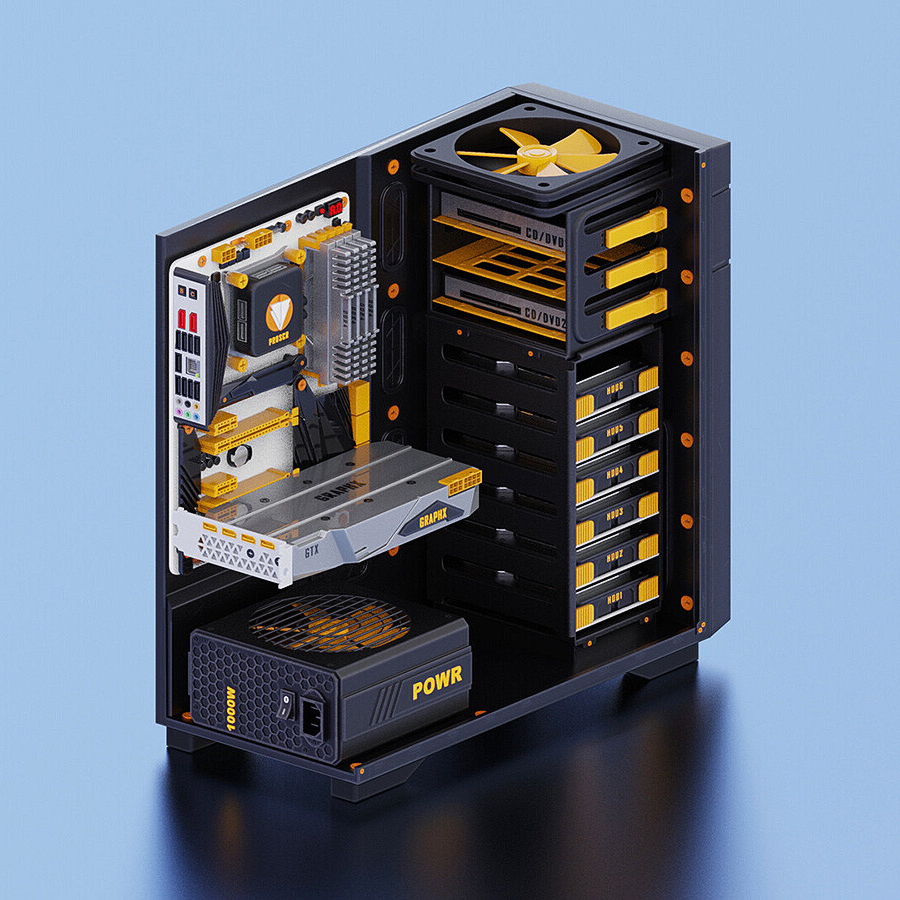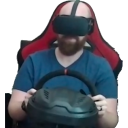Laptop battery recently died, and I’m planning a new PC build anyway, so I’m wondering: can I just remove the HDD from my laptop and connect it to the motherboard? Would I need any extra parts or hardware? I’m guessing no, but it’s hard to research on my phone. Any guidance is appreciated :) thanks!
Laptops use a 2.5 inch HDD, most desktop cases are designed to hold a 3.5 inch HDD. You may need a special bracket to hold the drive if the case you plan to use only has 3.5 inch bays.
Some modern cases do also include a 2.5 inch mounting spot due to SSDs using a 2.5 inch form factor.
You’d be surprised how many of us just have the drive dangling in there freely because fuck it.
With a spinning drive you really don’t want to do that, head crashes are a real thing and will kill a drive. With an SSD fuck it just yeet the drive into the case.
This is true. Spinning platter just dangling could end up getting fucked if it smacks against itself. Like tilting a 360 while running a game would scratch up the disc.
I did this in a very similar case to OP once. Worked without issues. 2.5" HDDs are so tiny and usually low RPM that it doesn’t really matter that much. But there’s also a bunch of cheap solutions you can use, like rubber bands or even just some foam to lay it on (did that with 3.5" HDDs).
Both these comments are super helpful ❤️ I might just let it dangle until I can copy off my data lol
If you’re just copying data, just make it external. The usb housing for those things are pretty cheap and can be useful in the future.
Oh that’s a good idea, I’ll look into it !
I have 5 hard drives in my case which has room for three. And I’ve never had an issue.
Or double sided tape in a pinch
If you were really lazy, you could also just cover the bottom circuit board of the drive with some electrical tape and just balance it on the jungle of wires running throughout the case.
Not that I would have any experience doing that…
You don’t even need to do that. Unless you’re pressing and rubbing the board against the chassis, any minor air gap and natural oxidation layer on each side is going to be more than enough for what’s probably only 5 V tops.
You can, yes. You need a SATA cable which likely came with your mainboard and connect it to your PSU as well. I’d still recommend to buy a SSD and copy your OS & files over to that though because HDDs are pretty slow and laptops typically also use low RPM HDDs. Your case also likely won’t have any 2.5" brackets to properly mount it so you may have to work out some cheap DIY solution, but if you read my other comment in theory you could have it just dangling too for a while.
Thank you!
You can 3d print a mount, if you have a (friend who has a) 3d printer, but most of my desktop cases from the last 10 years have at least one 2.5" bay.
The case I’m thinking of buying will probably do fine then - thanks!
Keep in mind that although there won’t be a problem getting that drive to work with that motherboard, you will likely need to reinstall your OS. If it’s Windows, you will also need to worry about licensing and activation.
Thanks for pointing that out! I’m not too worried, I figure I can configure the BIOS to boot from my hdd
That’s not OP’s point. The point is that you can’t just move the hard drive from your laptop to your desktop and expect your old OS installation to just work.
Oh, why not? Is it not similar to booting from a USB drive? The OS is Arch Linux and the drive is not encrypted.
Oh, I assumed too much. I thought you had Windows installed, so I don’t know how similar Linux is in these circumstances.
I would assume that a local installation may have configuration that is unique to your laptop’s hardware.
The OS may be smart enough to recognize that some things changed and adapt accordingly. But some old drivers and config settings may still unnecessarily linger around and waste disk space or CPU cycles. And hardware driver conflicts could also lead to system crashes.
Maybe I’m wrong, though?
Hmm, I do have some battery-specific configs, but they shouldn’t make a difference, and they’re trivial to deactivate.
The Linux kernel generally includes drivers for anything you could want, so I’m not concerned about crashes related to drivers.
Thanks for the concern anyway :)
Wait - people still use HDDs?
I use rotational hard drives to store backups and to store video. Rotational drives aren’t very good at fast random access, but I don’t really need that for those tasks.
They’re big and cheap. My “server” (desktop with delusions of grandeur) has an array of 3 2TB drives (Western Digital WD2003FZEX) running in a ZFS pool. I run Nextcloud and sync all my photos, videos and documents to it. I don’t need high speed storage, just a lot of it. Back when I built it (maybe 8-9 years ago) those drives were a reasonable price for that much storage. If I were to re-build it again today, I’d still pick spinning rust over solid state drives. I can get 8TB drives for ~$180. For the same price, I’d get far less space on a solid state drive and the extra speed wouldn’t be useful.
Buying the newest tech isn’t always the right choice. You should pick parts which fit the use case.
I have a server with 40TB of HDD storage. But my home pc only has SSDs, preferably NVMe.





